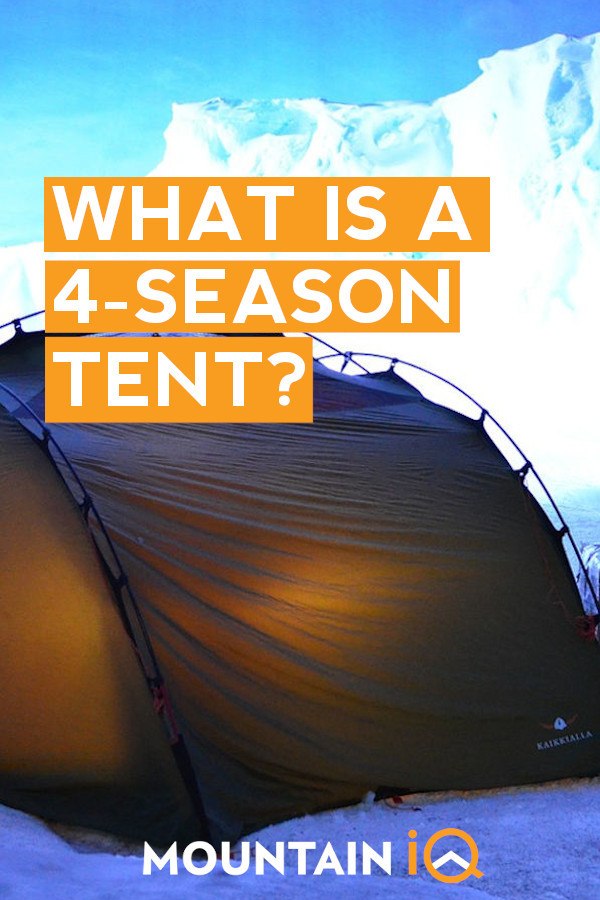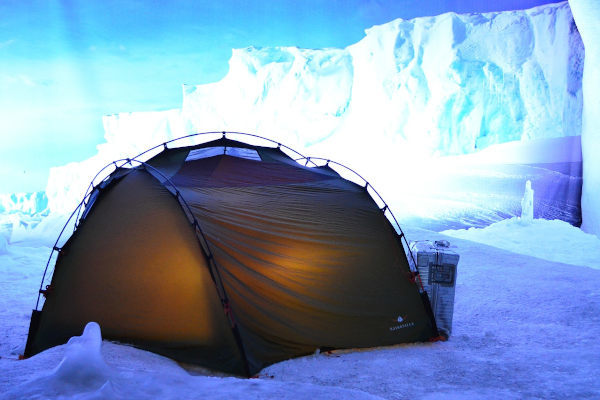If you're not on a tight budget and need a long-lasting extreme wind/rain/snow tent, then the ALPS Mountaineering Tasmanian 2 or the Black Diamond Mission are both excellent and have been tried and tested by thousands of mountaineers and pros.
For the budget option, it's a toss-up for me between the GeerTop 4-Season and the slightly more sophisticated Big Agnes C Bar. They might not be as good in strong winds or proper winter conditions though.
Best Cold Weather Winter Tents (Top Picks)
Best Overall
Best Value
Best for Extreme Weather
This article contains affiliate links. If you buy something through the links on this page, we might get a small commission. It will not affect your price but helps keep our site alive!
Top Cold Weather Winter Tents For Camping
We reviewed over 23 different cold weather / winter tents for camping for this article. Below are the best cold weather / winter tents that made our short list.
- ALPS Mountaineering Tasmanian 2 - Best Overall
- Black Diamond Mission - Best for Extreme Weather
- Black Diamond HiLight 3P Tent - Best Lightweight
- GeerTop 4-Season - Best Value
- Big Agnes C Bar
Read our complete buyers guide for cold weather / winter tents.
Best Overall Cold Weather Winter Tents
1. ALPS Mountaineering Tasmanian 3 Season Tent for 2P
The ALPS Mountaineering Tasmanian 2 is the perfect all-rounder and it is surprisingly affordable for what it has to offer.
With a continuous pole system, it is quick to set up and has sufficient space for two people and their accompanying gear. While it's not the most rugged, it will be more than capable of enduring an average winter.
Main Features
What we like
What we dislike
2. Black Diamond Mission for Extreme Weather Mountaineering
The Black Diamond Mission for 3 people is a fast pitching double wall tent was created for extreme weather conditions - it's normally used by pro mountaineers or expeditions at higher altitude. It's a bomb shelter for basecamp layovers.
Although quite sturdy, it's easy to pitch even in horrid weather with the help of the pre-attached fly and the hoop and hub exterior pole design.
We haven't tested the tent in extreme wind from multiple directions, but the manufacturers claim that its dome+tunnel architecture should protect you even in such drastic conditions.
It's made with the 30d high tenacity polyester fabric which is then properly seam-sealed, ensuring that it's durable for much longer and doesn't sag under heavy rain.
Main Features
What we like
What we dislike
3. Black Diamond HiLight 2 Tent
The Black Diamond HiLight is an excellent compromise between rugged and lightweight. This is a single wall tent, which is quick to set up, and designed with steep sides to prevent snow buildup.
This tent is a classic design, bare basics tent. There are optional add-ons that you can buy to upgrade this tent if you need to.
Main Features
What we like
What we dislike
4. GeerTop 4-Season
The GeerTop 4-Season Tent is a versatile and affordable option for the recreational camper. It packs down small so you can even take it backpacking.
The GeerTop 4-Season Tent has good water-resistance and UV protection and can be used without the outer layer in warmer weather, truly making it a 4-season tent.
Main Features
What we like
What we dislike
5. Big Agnes C Bar 3-Season Tent for 2-3 P - Best Value
The Big Agnes C Bar is another affordable 3-season 2–3-person tent. Yet, it's also quite light and not too hard to set up. It's ideal for novice hikers and for short camping trips in poor weather conditions.
The C Bar is a good lightweight shelter tent using modern design features to allow more space inside. Although compact, it has a vestibule to store gear, a large ceiling pocket, and 3 more mesh pockets for extra storage.
It's perfectly waterproof thanks to its durable fly and floor makeup.
Main Features
What we like
What we dislike
Cold Weather / Winter Tent - Buyer's Guide
What is a 4-Season Tent?
The name “4-Season Tent” is slightly misleading as you will generally only use a 4-season tent in winter. A winter tent is designed to handle inclement weather like strong winds, hail, and snow.
4-Season tents are designed to protect you from snow and ice as well as block freezing wind from getting inside. They have thicker, stronger frames to ensure that they survive the harshest of conditions.
Your tent is your first line of defense against the extreme winter weather, so the decision to buy one should not be taken lightly.
Unless this is a once off trip, buy the best you can afford. The initial investment will quickly pay itself off each time you use the tent.
Can a 3-season tent be used in winter?
3-Season tents are designed for mild weather and summer camping. They are not has durable or robust as 4-season tents and will provide little protection from strong winds and snowy conditions.
Unlike 4-season tents, 3-season tents have mesh windows to provide plenty of ventilation. This would not be helpful in winter as the cold wind and rain would be able to penetrate the mesh and get inside the tent.
If you are planning on going camping in a harsh climate, make sure you invest in a 4-season tent as a 3-season would not hold up well or protect you from the elements.
Other Features of Cold Weather / Winter Tents
Protection
A winter tent should not have any mesh panels. This will ensure body heat is captured and kept inside, while the cold stays outside. All the walls and floors should be made of a strong polyester or nylon fabric that is waterproof, windproof and rugged. A fly on a winter tent should extend to the ground, thus keeping the cold wind out and ensuring that snow does not drift in.
Structure
Stability is generally determined by the pole configuration and the structure of the tent. A typical cross intersection is a proven design that holds up well to strong winds. Look for steep walls that don’t allow snow to build up and add compromising weight to the tent.
A round dome shape will stand up better to strong winds than a cabin style tent.
Quality
Opt for tried and tested fabrics. Fabric is measured in denier – which indicates the denseness, durability and thickness of the fabric. A higher denier count is preferred in a winter tent.
Any fabric that is described as ''Ripstop'' is great. Ripstop refers to the weave pattern of the fabric; usually nylon that inhibits tears and rips, making your tent more durable.
Aluminium poles are generally strongest and preferred for stability.
Waterproofing
Waterproof coatings are rated in millimeters (mm). A higher number equates to better waterproofing. A 1000 mm rating indicates that the fabric can withstand a 1000 mm column of water for over a minute before some moisture will seep through the fabric.
Waterproof tents will have features like taped seams, strong footprints and reinforced corners so make sure you look out for these things in a 4-season tent.
Ease of setup
You don’t want to spend 20 minutes in the freezing cold, with gloves on, trying to set up your tent. Look for something quick and easy. Some tents can actually be set up from the inside. While this might take getting used to, it is very convenient being able to be protected from the elements while you pitch your tent. As always, practice setting up and taking down your tent before you head out on your camping trip.
Usability
Trying to open a tent door in a blizzard with gloves on is downright hard. Large zipper tags are easier to grip. Having more than one entrance will allow you to take advantage of wind direction and also, if an entrance is blocked up with snow, you still have access from an alternate opening. If there are a number of you sharing the tent, it is also much more practical having more than one entrance point.
Comfort and ventilation
It might seem counter-intuitive that you want to allow cold air into the tent when you are trying to keep warm, but if you don’t ventilate properly, the condensation from breathing will result in an uncomfortable and humid environment. Having smart vents that allow you to control the internal temperature will make it easier to stay in the tent and wait out bad weather.
Size
Considering that you will have to do most things inside your tent if the temperature outside is too extreme, it is helpful to have some extra space in addition to a sufficient sleeping area. A large, enclosed vestibule is a useful feature of a 4-season tent as you may also need to store your gear inside to avoid it being snowed under or blown away. As with all tents, if you want more living space, use the manufacturer capacity rating as a suggestion only and considering upsizing.
Price
Not all tents are created equal, and not all affordable tents are of poor quality. It is worth comparing tents within the same price bracket and seeing which one ticks the most boxes from your list of requirements. If you are a frequent camper, buy the best quality that you can afford.
Continue browsing
See more outdoor gear reviews and our detailed camping tent guide. Or check out these reviews:







